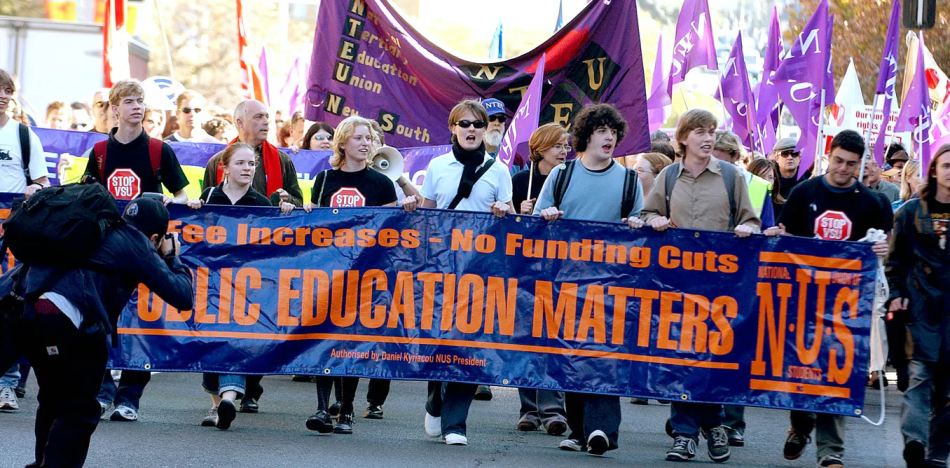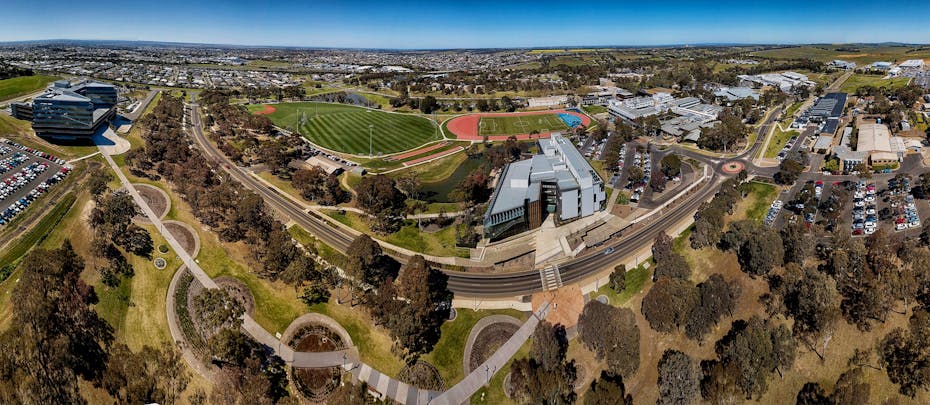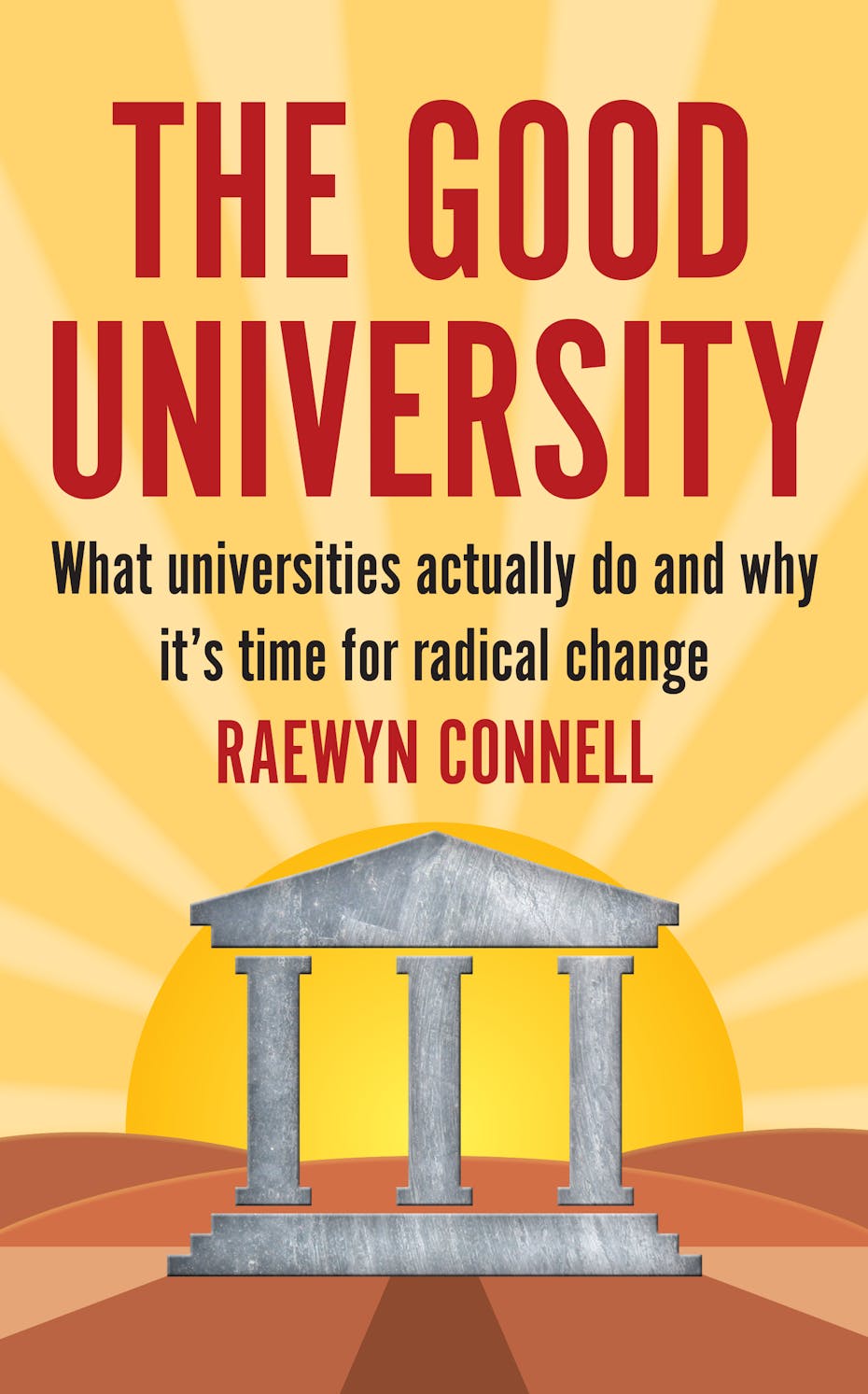
Can we grieve not for a person but for an institution? Should we be angry over possibilities destroyed, young talents denied a chance to flourish? Is there any point in lamenting greed, short-sightedness, the brutality of power?
As I write this, in September 2021, Australian higher education is in a deeper hole than it has been since the 1950s, when the creaky collection of universities inherited from colonial times, under severe stress, was rescued by the Menzies government. I worked in that rebuilt sector as student, teacher and researcher for about 50 years. Then I retired and wrote a book called, with a mixture of irony and hope, The Good University.
In the past couple of years I’ve watched the COVID-19 pandemic place huge new demands on university workers – my colleagues and friends – who had already come under heavy stress. This is a brief reflection on what has happened and why, and how we might do better.
The history matters
We’ve only had a national public university system for two generations; the sector has been through mighty changes in a short span. At first, Australian universities were separately funded by the colonial and state governments that set them up.
Building a national system made sense under the agenda of modernisation, industrialisation and nation-building that was more or less shared by Liberal and Labor parties in the postwar decades. High-school enrolments boomed in the 1950s and undergraduate enrolments followed, spurring governments to launch new universities as well as expand the older ones. National co-ordinating bodies were established.
At the same time there was a spurt in higher degree studies, giving Australia, for the first time, a capacity to produce its own research workforce. This was, potentially, a revolutionary change for the economy and society – a potential never realised.
Universities in the 1950s and 1960s were not comfortable places. They were run by an oligarchy of male professors who were linked, especially in faculties of law, medicine and engineering, with professional establishments outside. The odour of the British Empire still hung around academic life. Curricula were monocultural, despite the mass immigration of Australia’s postwar decades and the presence of Indigenous cultures.
There’s research showing that many of the students were quite alienated from these institutions. The majority were enrolled in bread-and-butter “pass” degrees; they listened to lectures and sat for exams but got little attention from academic staff. Only a minority were in honours streams with a more challenging agenda.
Through the 1960s, students increasingly became politicised in groups that opposed the war in Vietnam, supported Aboriginal causes and demanded democratic reform of the universities themselves.
When the Whitlam government took over the entire funding of universities in the 1970s and abolished fees, the stage was set for further expansion. New suburban and regional universities were launched, and the combination of rapid growth and new institutions made space for experiments in curriculum and teaching methods. New fields such as urban studies, environmental studies, women’s studies, information science and molecular biology opened up.

Both the students and the university workforce became more diverse. Yet universities remained privileged institutions, gateways to the elite professions. Most vocational education was the business of TAFE (Technical and Further Education) colleges and the Australian equivalent of polytechnics, the CAEs (Colleges of Advanced Education).
By the mid-1980s, as the political system shifted towards a free-market agenda, a new kind of pressure was exerted on education. At the end of the decade, Labor’s education minister, John Dawkins, introduced dramatic changes for universities. Fees were restored, the CAEs were folded into the university system in a chaotic free-for-all of amalgamations and takeovers, co-ordinating and consultative bodies were ditched, and university administrators were encouraged to become corporate-style managers and entrepreneurs.
The rise of universities as competing businesses
To do him justice, Dawkins wanted to widen access to universities. Basically, he instigated a fresh expansion of the system by beginning to privatise it. Though a less obvious privatisation than the outright sale of Qantas and the Commonwealth Bank, this would have huge consequences in the long run.
University enrolments did grow, while the proportion of public funding in universities fell. Fees rose steadily, and student debt – more or less hidden by the deferred payments of HECS and then HELP – grew.
Some universities became heavily dependent on fees from overseas students. University managers’ salaries and bonuses rose steeply, losing any connection with university workers’ pay packets. (By 2019, Australian vice-chancellors’ average package was a million dollars a year, very high by global standards.)
The system began to split, with a cabal of older universities declaring themselves an elite – the “Group of Eight”, derisively known as the Sandstones. Universities were gradually redefined as market-oriented, competing firms rather than co-operating parts of a public service.
More and more executives and directors from for-profit companies were appointed to university councils, bringing their business connections and their business ideology. University managers centralised decision-making in their own hands, imposing “performance” demands on staff who had previously been trusted to do their work as professionals.
Managers increasingly saw their younger workforce not as the teachers, researchers and operations staff of the future but as a budget cost needing to be reined in. The result has been a massive casualisation of the teaching workforce, outsourcing of more and more general and professional staff, and a growing distrust between the university workforce and its managers.
Exploring the role of universities

This was the situation when I wrote The Good University, in the years after a long industrial struggle at the University of Sydney – an enterprise-bargaining affair in which management tried hard to degrade our conditions of employment. Meditating on the picket line, I thought that university workers had been on the back foot too long, responding to every policy disaster from Canberra or aggression from management. To shift the terms of debate required serious rethinking of what these institutions were.
I tried to re-examine the work that universities did, their social role, their history (much more varied and interesting than most people know), and what alternatives to the dominant model could be found for curriculum, control and social purpose. I thought we needed, above all, fresh ideas about the kind of university that would be good to work in, good to study in and worth fighting for.
Well, the book had been out for a year, and I was in the United States on a tour to publicise and discuss it, when the COVID-19 pandemic arrived. I scrambled home on one of the last scheduled Qantas flights and went straight into self-isolation.
Nothing could isolate the universities from the pandemic. In Australia as overseas, campuses were closed as lockdowns of regions and cities began. University staff worked very hard to shift courses online, and that intricate work is still under way nearly two years later. Students too had to change their routines and methods, learning to work from home, learning to study in isolation and needing their own access to the internet.
These changes happened worldwide, but the crash was particularly brutal in Australia. The national government, so slow to organise a vaccination program, rushed to close the borders – that was its primary response to the pandemic, eerily matching its response to asylum seekers.
Border closures suddenly cut off the flow of overseas students, who before 2020 had been paying about half the total fee income received by Australian universities. This plunged many institutions into financial trauma – one reason for their heavy job losses, now estimated at 40,000 across the higher education sector.
No sympathy or support from government
I doubt that the Morrison government worried about this effect. When the JobKeeper scheme was introduced in the first half of 2020, subsidising businesses to keep their workers employed during the pandemic, the government carefully excluded universities.
In June the same year it revealed its ideas about higher education in a document called the Job-Ready Graduates Package. It’s the most miserable excuse for a higher education policy in the 80 years that such documents have been written in Australia. In the name of vague “national priorities”, the Job-ready Graduates Package arbitrarily doubled fees for arts and humanities degrees, cut overall support for areas (such as nursing and education) that it claimed to encourage, introduced perverse trade-offs likely to reduce support for research and, in the background, cut government support for the whole sector.
What is going on here? In general terms, both the Coalition and Labor have been reducing the capacities of the public sector for a generation; this is another step in the same direction.
More specifically, there is a culture-wars agenda. The reactionary wing of the Coalition, in step with the Murdoch media, doesn’t like humanities and social sciences, basically because they encourage critical thinking (called “cultural Marxism” in recent right-wing rhetoric). Accordingly, the policy makes humanities and social sciences more difficult to access and burdens those who do with heavier debt.
Perhaps most importantly there’s an attitude that flows from overall economic strategy. When the Menzies government expanded higher education, the new funding made sense within the state-guided industrial development strategy of the time. That development strategy was abandoned in the neoliberal wave of the 1980s in favour of deregulation, “opening” of the Australian economy and a search for comparative advantage in global markets.
The industries with big comparative advantages in the short term were mining coal, mining iron ore, mining other kinds of rocks, running sheep and cattle, and growing wheat. These are industries with low demand for highly educated workers and little demand for a research capacity in Australia, since their technology is imported. In the logic of free-market fundamentalism, Australia hardly needs universities at all.
It might be politically embarrassing to close them down, but it’s easy to see why in 2020 the Coalition government would refuse JobKeeper subsidies and leave universities and university workers to sink or swim in the pandemic. It’s not clear that the Labor leadership would have done anything very different.
Public still believes in the public university
Yet there is considerable popular support for higher education. Before the COVID-19 pandemic, universities and colleges around the world were teaching 200 million students, representing a vast increase in recent decades. Domestic demand for university places has held up in Australia, despite the pandemic.
Managers and governments might treat universities as competitive firms, but the public still tends to see them as a public service. Universities do well in surveys of public trust in various institutions.
Universities could have a more secure position in the economy, the culture and public policy. To reach this new position would take more than a public-relations effort. It would need a serious reconstruction of the way universities work as organisations and the way they serve their public.
It’s highly unlikely that Universities Australia, the organisation that claims to be “the voice of Australia’s universities”, would support reconstruction: it represents the managers who benefit from the current regime. But managers aren’t the only people on campus. There are multiple groups and different interests.
The National Tertiary Education Union, which represents the bulk of university staff, has been discussing alternatives for the sector and paying more attention to casualisation. Student organisations, too, could support a different future.
Let’s consider just one aspect of the work done in universities. The commonest image of university teaching is a lecture. Holding forth to students sitting in neat rows is what professors and lecturers are supposed to do, even if the podium is replaced with a screen. But that’s not the heart of higher education.
University teaching builds a relationship between groups of students who have adult intellectual capacities, and the complex structure of research-based knowledge. It does not simply train young people for current jobs; it educates graduates who can think for themselves from a base of solid knowledge and relevant method.
The process needs co-operation across the university workforce, a supportive environment and an intricate, two-way learning process between teachers and students. That can’t be commanded from above nor automated from outside. Universities work from below, and that is their strength. There is democratic potential in the nature of the work itself.
The good university isn’t a lost cause
There has been “crisis” talk about universities for a generation. I was sceptical of it, but I have to say that the language of crisis makes more sense now. The riotous growth of managerial power, the level of distrust between management and the workforce, the stresses on university workers, their increasingly precarious employment, government hostility or indifference, plus the effects of the COVID-19 pandemic – that’s a more toxic combination than I have ever seen before.
But, classically, a “crisis” is not just a threatening situation. It’s a turning point, which may be for the worse or for the better.
For the better – how? There’s a need for imagination, creating new models of university life and work. There’s a need for internal reform, for industrial democracy. There’s a need for policy work, for more stable funding and more secure jobs. There’s certainly a need for more rational co-operation among universities. There’s a need for more effective support from universities’ multiple constituencies. And underlying all of these, there’s a need to organise – among university workers, among students and their families, and beyond.
Coming back to the questions I raised at the start, yes, there is reason to grieve for what’s been done to institutions that were flourishing, though flawed. And there’s reason for anger at what’s been done to a whole generation of university workers. This wasn’t necessary, and it isn’t necessary now.
It won’t be easy to turn the situation around, but it can happen. Good universities are possible, if we are determined to make them.
This article is an edited extract, republished with permission, from Griffith Review 75: Learning Curves edited by Ashley Hay.![]()
Raewyn Connell, Professor Emerita (social science), University of Sydney
This article is republished from The Conversation under a Creative Commons license. Read the original article.










